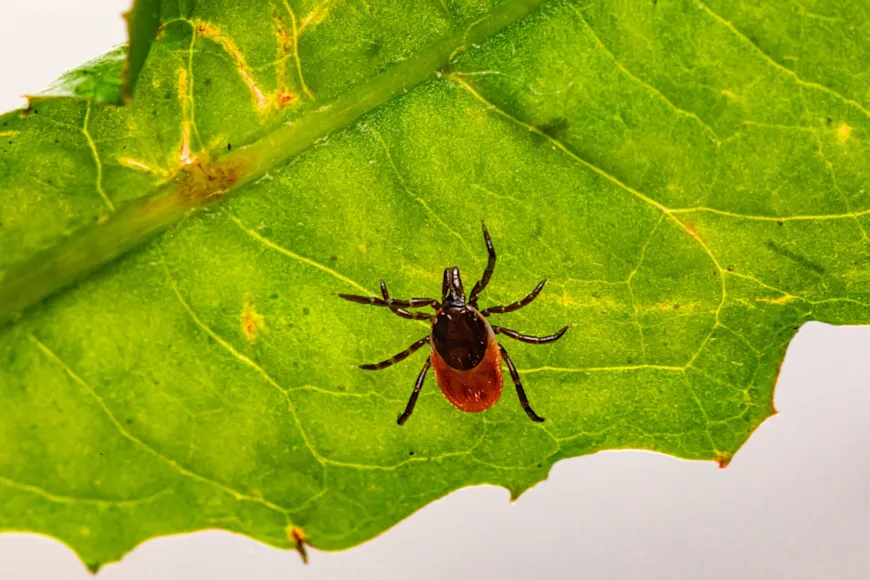_We may earn revenue from the products available on this page and participate in affiliate programs. Learn more ›
_
If you live in an area where ticks thrive
, knowing how to prevent tick bites and what to do if one manages to latch on is a necessary preventative for safety outdoors. While ticks are creepy crawly parasites, they are essential to those ecosystems, so the best we can do is learn how to safely coexist when we enter their homes.
The Centers for Disease Control and Prevention’s data on ticks
and tickborne illnesses show that cases of Lymes disease have been on the rise. With more news coverage surrounding Lymes disease as a potential outcome of exposure to ticks, many families and outdoor enthusiasts wonder what they can do to minimize the risks for them and, for most of them, their dogs.
The increase in deer ticks specifically is of concern for anyone that enjoys the outdoors, but hunters, specifically those that are active in the Spring and Fall. Even in more suburban areas, ticks have become widespread and are found across the United States. While deer don’t support the Lyme bacteria like other small hosts like rodents do, deer are the perfect vehicle for expansion. So, areas with large deer populations may see a larger expanse of ticks and potentially a wider spread of disease.
Where Do Ticks Live?

Ticks thrive in grasslands, and you may find higher concentrations in tall grass or shrubs.
Ticks live everywhere, and different varieties of ticks are found across the United States. Ticks thrive in shady, moist areas and tend to stay on the ground level, and they avoid hot, humid environments. They may cling to tall grass, shrubs, or overgrown areas where they can quest for prey as they pass. At home, ticks may be found in the lawn, garden, or on the edges of your property if surrounded by forest or grasslands. The CDC has an interactive tick map
to show the types of ticks and potential concentrations in your area.
The Eastern and Midwestern United States see large populations of ticks, but they’re also found in the Western US. Many cases of Lymes disease have been reported in areas of Wisconsin
and California, but it is a possibility anywhere ticks live. While Lymes disease may be the most common tick-borne disease, other areas of the country may have ticks that carry other diseases like Rocky Mountain Spotted Fever. New pathogens are popping up across the country and can be attributed to ticks. There have even been some reports of tick bites causing unique allergies to things like red meat (from the lone star tick). The CDC has also recently confirmed a tick-related death in Maine from the Powassan virus
.
According to Dan Wolff, a Northeastern tick expert, the age of the tick can influence the likelihood of it carrying a disease.
“The younger the tick is, the less chance it has of carrying a pathogen that carries illness. The issue is that in their younger stages, their size is a factor. They are eggs, larvae, nymphs, and then adults. The nymphal-size deer ticks have about 20-25% infective rate that they’re so small that you miss them. A young tick may bite a mouse that has the Lyme bacteria, and now when the tick bites a clean mouse, that mouse has the Lyme bacteria, and so on. An older tick will be as high as 50-60% infectious, but you can feel them easier. This is where thorough tick checks play an important role. The longer a tick is attached, the more time it has to transmit a pathogen.”
Dan Wolff, founder of Tickease
If you spend time outside, be aware that the most tick-infested habitats are tall grasses and shrubs. In the Spring, high concentrations of ticks are most active, so take extra precautions.
How to Prevent Exposure to Ticks
The best approach to coexisting with ticks is to implement proper protections. When discussing tick prevention, we want to avoid contact with ticks on our skin. That drastically reduces the chances of the ticks latching on and spreading diseases.
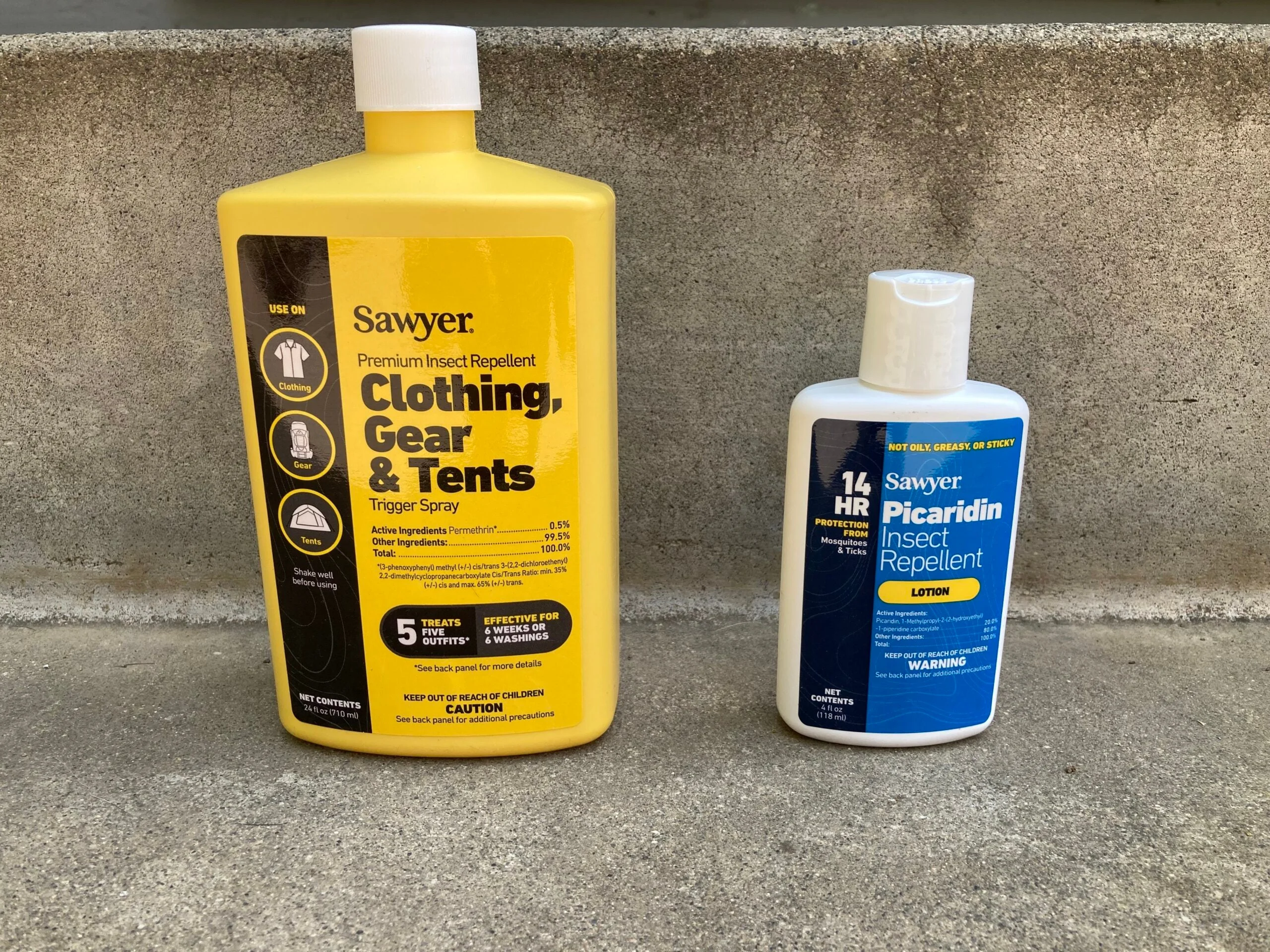
_Two of my favorite tick prevention products include Sawyer Permethrin Insect Repellent
(left) and Sawyer Picaridin Lotion
(right) – Meg Carney_
How to prevent tick bites:
Reduce the amount of time you spend in tick-infested habitats.
Walk and camp in designated areas and avoid contact with surrounding vegetation or overgrown areas.
Wear clothing that covers your legs and arms. Even consider tucking socks into your pants.
Wear light-colored clothing.
Treat clothing, boots, and camping gear with products containing 0.5% permethrin.
Use EPA-registered insect repellents
.
When it comes to tick repellents, permethrin
seems to be the ingredient of choice for many tick experts. Other tick repellents simply repel the tick, while permethrin will actually kill it. That way, if you track a tick into the house, it doesn’t migrate onto anyone else. Once you’re done hiking or camping, do a tick check on yourself, your children, and your pets. If you were camping, consider checking gear as you pack it away to prevent the potential of bringing ticks indoors. I usually do a tick check as I leave an area before I get into the car and again when I get home. Ideally, you’ll discover them before they ever attach to your skin.
Have a “tick check zone” in your house, lawn, or garage where you can thoroughly check yourself and your pets before allowing them inside the home. Then shower and wash your clothes to ensure you are genuinely tick-free.
Ticks like to get in the nooks and crannies, so investigate using a mirror or have another person help you. Common areas where ticks may bite and should be examined include:
In and around ears
Inside belly button
The back of the knees
Around the waist
Between the legs
Under the arms
In and around the hair
See How to Check Yourself for Ticks. Don't Neglect Your Crevices!on YouTube
The CDC recommends showering within two hours of exposure to ticks and traveling in tick habitats. That timeframe reduces the risk of Lymes disease because it washes away unattached ticks and allows you to do a more thorough tick check.
How to Prevent Ticks on Dogs
Our dogs are a magnet for ticks, or at least it seems like they are when we are out hiking and camping. Since many dogs run through brush and are closer to the ground, it is easier for ticks to attach to them in search of a place to bite. Ticks can also transmit diseases to our pets, so it is essential to give them the proper protection and preventatives before entering tick habitat.

Keeping dogs on leash and on the trail can minimize the number of ticks they pick up during a hike.
We recommend consulting your veterinarian to see which tick repellent is best for your pet. Still, some of the most common options include ingestible treatments that are prescribed and often included in heartworm medication. Topical flea and tick treatments are also available but require a higher frequency level to be effective. Most veterinarians recommend prescription topical treatments versus over-the-counter options due to their testing, ingredients, and effectiveness. Other external tick-repellent products may consist of flea and tick collars
.
Flea and Tick Collar
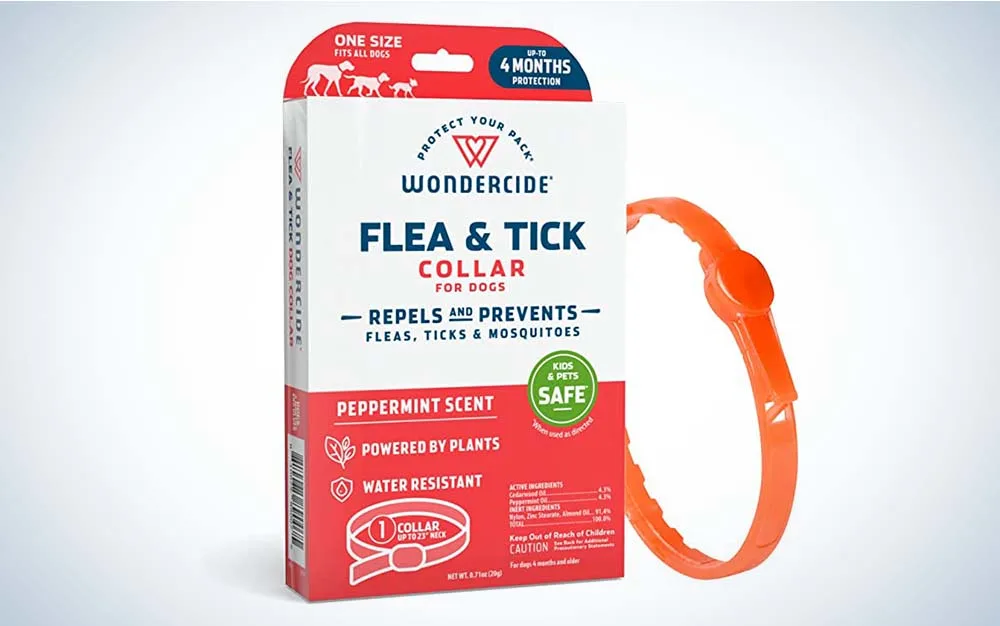
Avoid using the Hartz brand for flea and tick treatments
and other pet products, as they are linked to lawsuits resulting in the death and injury of many dogs.
Although flea and tick treatments are effective, always do a tick check on your pets before allowing them to enter your home. Consider giving them a bath with a tick-preventative shampoo
as well to ensure all ticks are removed.
What to Do if You Have a Tick Bite
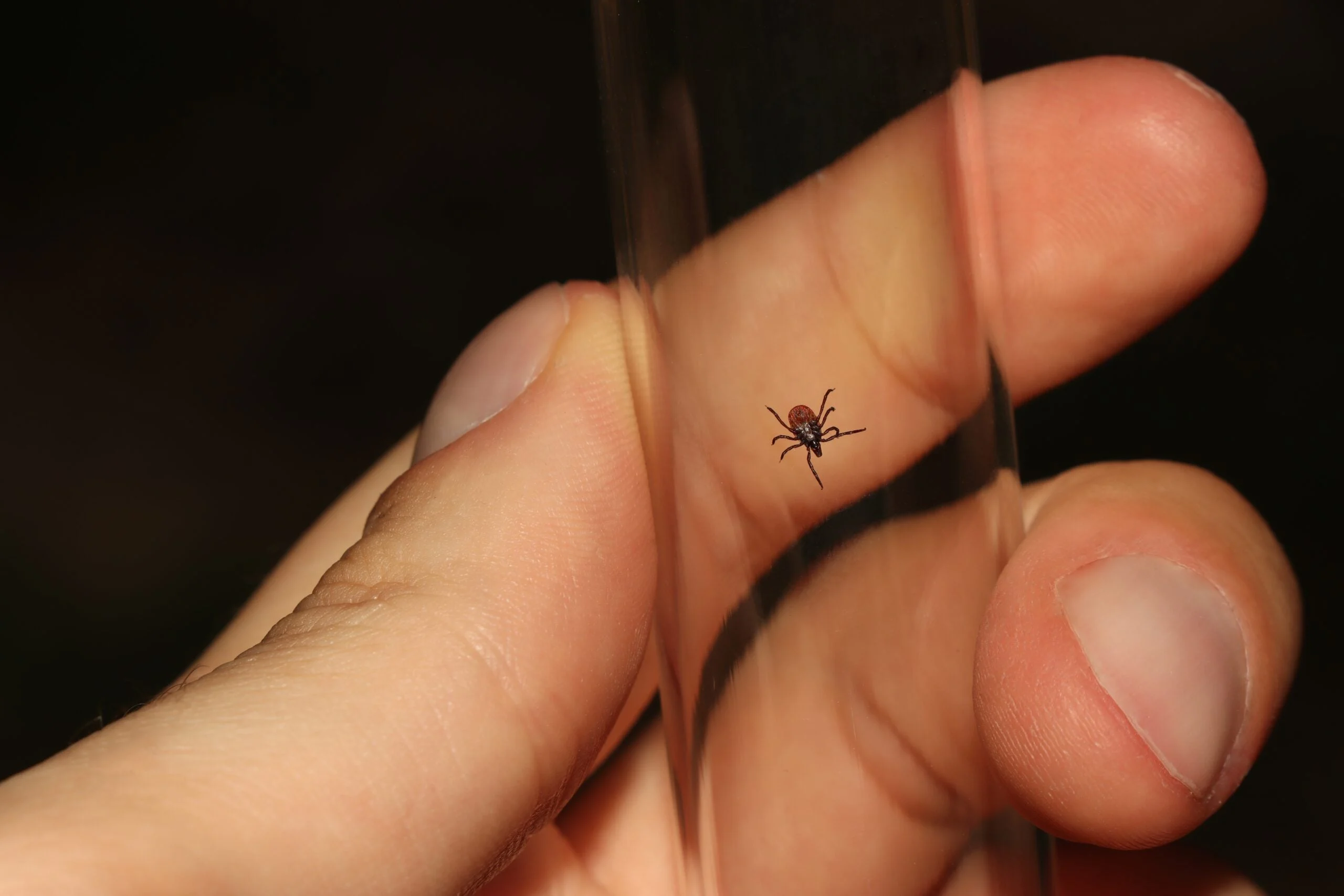
_Photo by Marino Linic
on Unsplash
_
If you find a tick attached to your or a pet, don’t panic. Most experts agree that it generally takes 36 hours
for the bacteria that causes Lyme disease
to travel from the tick to the host. That’s why a quick tick check is essential in preventing disease transmission.
So, if you find a tick attached to you, your children, or a pet, remove the tick using a fine-tip tweezer or a tool like Tickease
. Grab the whole tick and pull it straight out. If the head of the tick separates from the body and is still attached, grasp the head with the tweezer again, pull upwards, and remove it completely. Sometimes, you may need to widen the attachment hole with a needle to remove the tick completely.
Tickease Tick Removal Tool
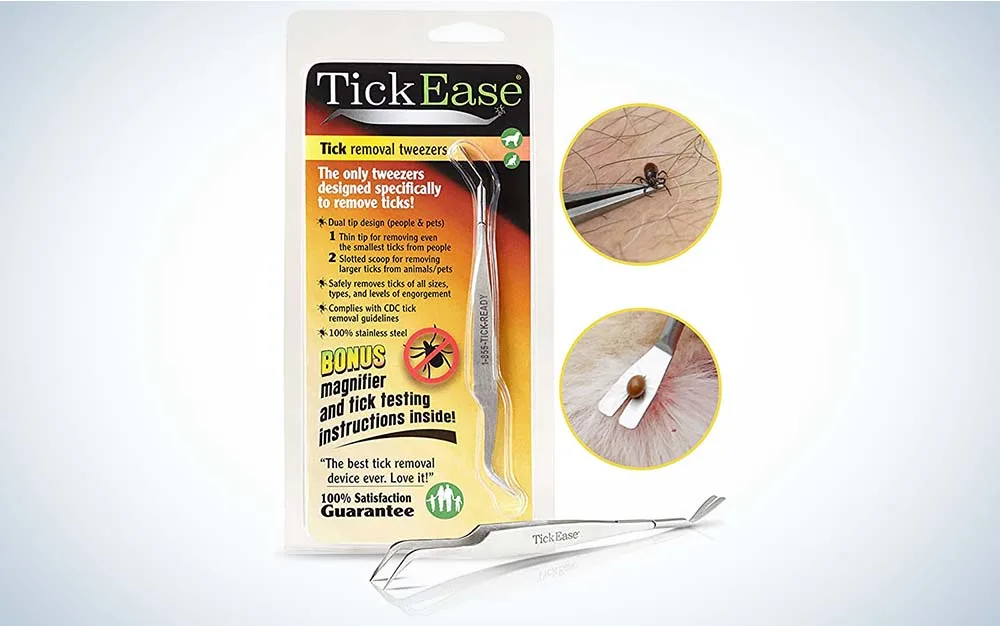
Avoid putting anything on the tick, they are stuck in the skin with their mouth barbs, making it hard for them to detach quickly. If you squeeze with flat-tipped household tweezers, you risk squeezing the tick’s body and releasing more saliva or bacteria into your skin. Proper tick removal decreases your chances of pushing any excess bacteria from the tick into your skin.
Dan Wolff recommends keeping the ticks once they’re removed from your body.
“It’s a good idea to save the tick in a baggie. They’ll die on their own within the bag due to the humidity. Write your name on that bag, the date of removal, the area it was picked up, and the amount of time it was attached. That way, it can be tested if you contract a tickborne disease or if you want to send the tick in for testing. Ticks carry viruses, bacteria, and parasites, and the onset of illnesses carried by ticks is all very similar. So having the information from the tick that bit you can help determine what course of treatment you need.”
Dan Wolff, founder of Tickease
Once the tick is removed, clean the bite area. Even if the tick was only attached briefly, monitor the bite area and note any signs of irritation or disease. While it doesn’t occur in all cases, one telltale sign of lymes disease from a tick bite is a bullseye rash around the bite location. Other symptoms may include fever, fatigue, and achy joints. If you suspect you may have Lymes disease or another tickborne illness, get treatment immediately.
FAQs
Q: Do natural tick repellents work?
can work, but they often require a higher frequency of application. Natural repellents that work against ticks include cedar oil, tea tree oil, peppermint oil, eucalyptus oil, citronella, neem oil, and citrus smells like lemon and orange. Many natural tick-repellent products are a combination of these oils.
Q: Are natural tick repellents as effective as chemical-based formulas?
At this time, it doesn’t appear as if natural tick repellents are quite as effective as chemical-based formulas
. However, they can still work if applied correctly and with enough frequency.
Q: What is the best way to control ticks?
If you want to prevent ticks in your yard, the best way to mow the lawn frequently and to cut tall grasses or brush around the home and edge of the property. Having a barrier of woodchips or gravel between lawns and other areas can also restrict tick migration.
Q: Do tick bracelets work?
Yes, most tick and insect-repellent bracelets
work for a short period. Please take note of the manufacturer guidelines to see the projected time frame in which they are effective and have replacements on hand as needed.
Q: How many days will a tick stay attached?
Ticks fall off on their own after around 3-6 days. Irritation in the area where the tick fell off may be noticeable and is a normal response to the tick’s saliva. Remember, the quicker a tick is removed, the lower the likelihood of disease transmission.

